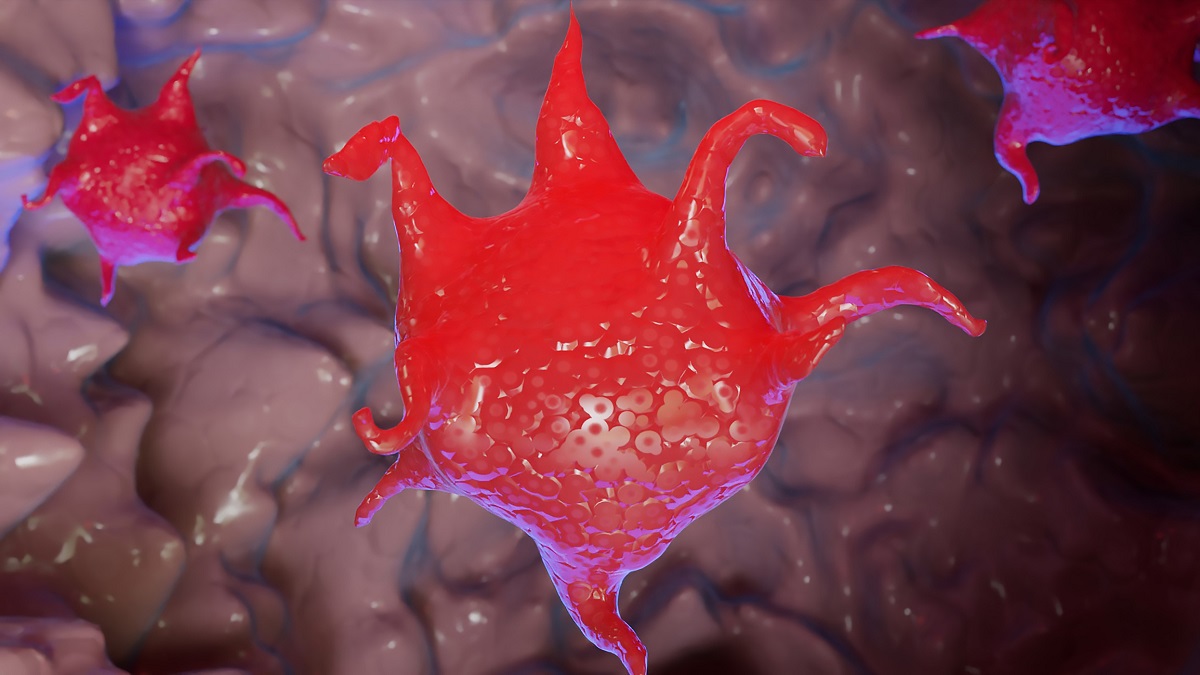KEY TAKEAWAYS
- The study aimed to evaluate the efficacy and safety of BR-VR induction.
- The primary endpoint was to evaluate ORR.
- BR-VR achieved high uMRD rates and reduced TLS risk in CLL.
While venetoclax (VEN) has demonstrated effectiveness in treating chronic lymphocytic leukemia (CLL) as a frontline therapy, there is still uncertainty regarding the most effective combination regimens and the recommended duration of treatment.
Andrew Lipsky and his research group aimed to investigate and evaluate the effectiveness and safety of an induction regimen involving bendamustine/rituximab followed by consolidation with venetoclax/rituximab (BR-VR) for a predetermined one-year period in treatment-naive patients with CLL. Their hypothesis posited that this approach would elevate the rate of achieving undetectable minimal residual disease (uMRD) while concurrently mitigating the risk of tumor lysis syndrome (TLS).
The phase 2 clinical trial, conducted as a single-arm, open-label study with patients aged 18 years and older necessitating therapeutic intervention, underwent three cycles of bendamustine/rituximab (BR), followed by dose-escalated VEN and six cycles of venetoclax/rituximab (VR), succeeded by five cycles of VEN monotherapy. The primary endpoint was the determination of the objective response rate (ORR), while secondary endpoints encompassed the uMRD rate, time to uMRD, and the assessment of adverse events (AEs).
As of May 2023, a total of 42 patients (pts.) were enrolled in the study, and 24 individuals with a follow-up of at least 15 months successfully completed the therapy. The baseline demographic characteristics revealed a median age of 61.5 years (range 38-84). Prognostic assessments indicated that 16 pts. (66%) had unmutated IGHV, and 1 pts. (5%) exhibited TP53 aberrations.
The overall response rate (ORR) was 100% (79% CR/CRi, 21% PR [due to small residual nodes]). Following the initial BR induction, 18% achieved CR/CRi, while 82% achieved PR. At the 16-month mark, the rates of uMRD (<0.01%) in peripheral blood (PB) and bone marrow (BM) were 78% and 70.5%, respectively. Intermediate MRD (0.01% – <1.0%) was observed in 23% (4 pts.) of BM. The median time to uMRD was 10 months (range 2-15) in PB and 12 months (range 3.6-15) in BM.
During the BR induction, the most common treatment-emergent AEs of (any grade/grade ≥3) included anemia in 13/3 pts. (46%/10%), nausea in 7/0 pts. (25%/0%), neutropenia in 10/6 pts. (36%/21%), and rash in 10/1 pts. (36%/4%). Emergent AEs during VEN treatment included neutropenia in 17/11 (60%/39%), diarrhea in 16/0 (57%/0%), leukopenia in 14/9 (50%/32%), and nausea in 10/0 (36%/0%). The risk of TLS substantially decreased after the BR lead-in. Among 5 high-risk patients at baseline, only 1 remained high-risk after BR; of 12 moderate-risk patients, only 3 remained at moderate risk, with the remainder classified as low risk.
The study concluded that the treatment-naive CLL patients undergoing the BR-VR regimen experienced a safe, well-tolerated regimen demonstrating elevated uMRD rates in both PB and BM across all prognostic risk groups. Additionally, this therapeutic approach significantly mitigates the risk of TLS. This study was sponsored by Nicole Lamanna.
Source: https://clml-soho2023.elsevierdigitaledition.com/328/index.html#zoom=true
Clinical Trial: https://clinicaltrials.gov/study/NCT03609593
Lipsky A, Hill B, Winter A. et al.(2023) “High Rates of Undetectable Minimal Residual Disease Remissions With Time‑Limited Bendamustine, Rituximab, and Venetoclax (BR‑VR) in Untreated Chronic Lymphocytic Leukemia (CLL) — an Updated Analysis” Presented at SOHO 2023 (Abstract: CLL-542)



